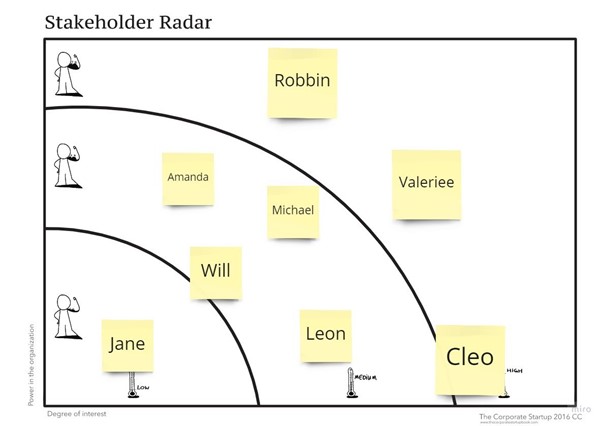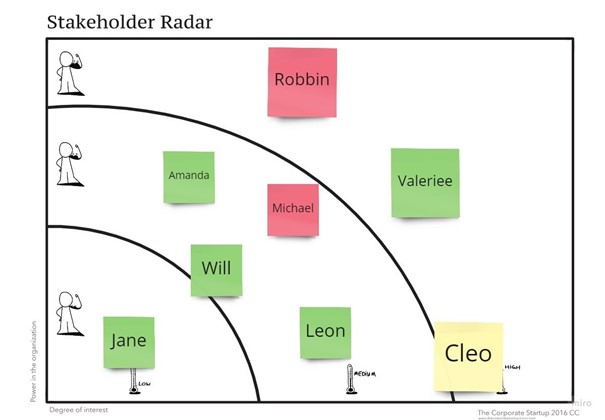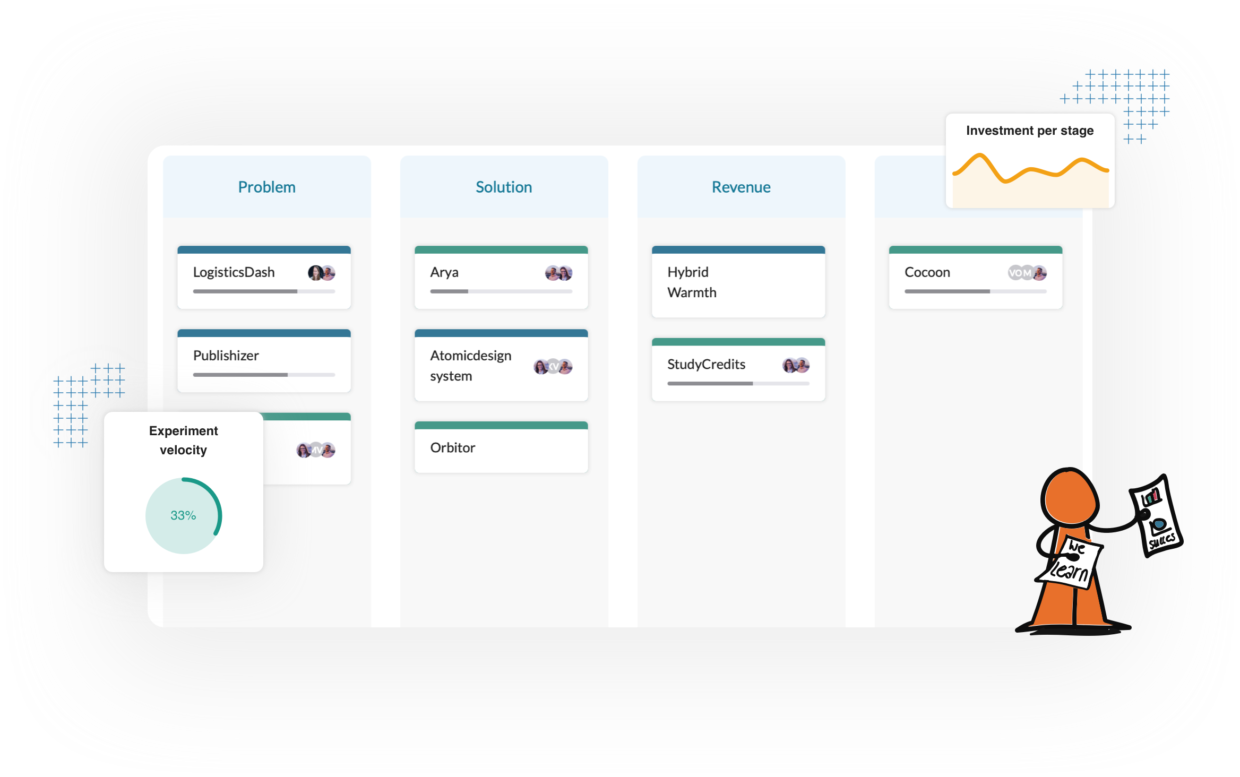Conducting a stakeholder analysis with the stakeholder radar
Table of Contents
From our experience, your corporate startup will only succeed if the key stakeholders of the core business are being managed correctly. But to do so, you need to understand the internal environment of the business. In this article, we explain how to better understand and map the internal environment of your organization by analyzing your stakeholders.
Who are your stakeholders?
Your stakeholders are everyone with a “stake” in your corporate startup. Part of these stakeholders will be your customers but think also of other departments within the company, (direct) managers, and suppliers.
Some stakeholders are more important to your corporate startup than others. But no matter their role, managing stakeholders effectively can make a big difference to the success of your corporate startup. Involving managers early on increases the chance of widespread adoption when you have validated your business model.
Stakeholder management also involves active communication, even though it is good to understand that not every stakeholder needs the same information at the same time. We need to understand which stakeholders to approach first and which we can approach at a later point in time. To do so, we identify and classify different stakeholders by conducting a stakeholder analysis.
The Stakeholder Radar is a tool from The Corporate Startup to help you analyze your stakeholders. You plot all your stakeholders on the template based upon their power in the organization and their interest in your startup. This way, you identify who your stakeholders are, and what their influence might be. You also know who to involve right away and who to inform at a later stage.
Using the stakeholder radar to analyze the stakeholders
To start with your stakeholder analysis, download the stakeholder radar at the bottom of this article, or draw one yourself. The X-axis is used to indicate the amount of interest a stakeholder has in your idea (left being low, right being high), the Y-axis is used to indicate the amount of impact a stakeholder might have on your corporate startup (down being low and up being high). Write all of the stakeholders you found down on sticky notes and spread them out over the radar, based on the degree of interest and influence they might have. It’s not too important to get every stakeholder exactly in the right place, as long as you have a good indication of where the stakeholder would belong on the radar.

Stakeholders that have a low degree of impact, but a high degree of interest are good to have around, but it’s less worth it to involve them actively, so just keep them updated every now and then.
Stakeholders that have little to no interest, no matter the impact they might have, usually take a long time to convert, which is hard work. You should try to find a better-suited substitute for these stakeholders, but if there are none, don’t be afraid to approach them anyway.
By conducting the stakeholder analysis, you get a better understanding of when and how to approach the stakeholders. Generally, the following applies to certain stakeholders: Stakeholders who have a high degree of impact and interest are worth focussing on.
[convertkit form=2607649]
Use the Stakeholder analysis to turn a Stakeholder into a Sponsor
It is advisable to closely manage the stakeholders that have high organizational power and high interest in your startup. They want to be involved and have the power to help you move forward. By managing them closely, we suggest informing them in-depth and periodically on the progress of your startup. Having periodical status meetings can be a viable option to do this.
In the first part of this article, we have mostly looked at stakeholders that have high organizational power and high interest in your start-up and are supportive. But there are also stakeholders that have a neutral opinion or even a negative opinion about your startup. This last group of stakeholders is at least as, and maybe even more, important to understand than your supporters. Why are these stakeholders against your startup? Could you identify what objections they have and ways to turn them into supporters?
You might also be looking for a sponsor for your startup. A sponsor is a stakeholder who is willing to step up and offer long-term support to you with his network, resources, and potentially his budget.
So what we will do next is to color-code the radar. Take stickies of two new colors, one for the people who support your startup, and one for people who are against it. Color code every name on your stakeholder radar. If you don’t know whether they support you or work against you, leave them in the original color.

Your most likely sponsor is the person who has the highest organizational power and the highest interest AND who is currently already supportive.
[convertkit form=5116887]
Conclusion
To manage your stakeholders properly, you will have to conduct a stakeholder analysis. The stakeholder analysis is used to indicate who your stakeholders are, and how you should communicate with them.
The Stakeholder Radar is a tool that helps you classify and identifying these different stakeholders.
Asking yourself questions why a certain stakeholder is, or is not, supporting your idea helps you get a better understanding of the Stakeholders. After you have analyzed your stakeholders, fill in the radar and colorize the supportive and unsupportive stakeholders.
You know how to communicate with different stakeholders. And also which stakeholder to approach first for support. This is turning your stakeholder analysis into stakeholder management.

Timan Rebel has over 20 years of experience as a startup founder and helps both independent and corporate startups find product/market fit. He has coached over 250+ startups in the past 12 years and is an expert in Lean Innovation and experiment design.

